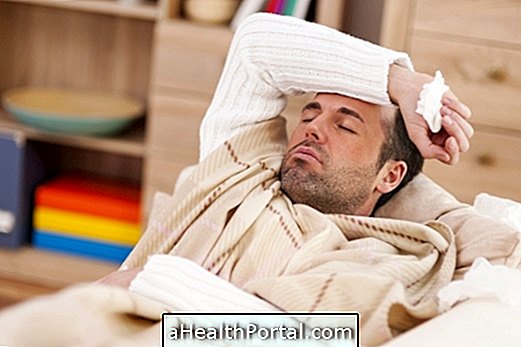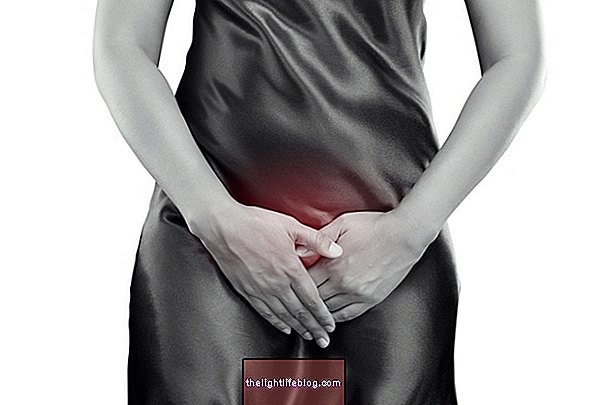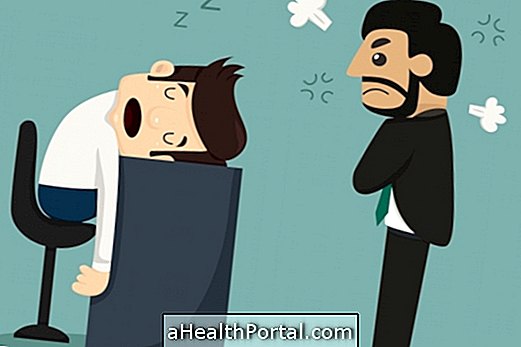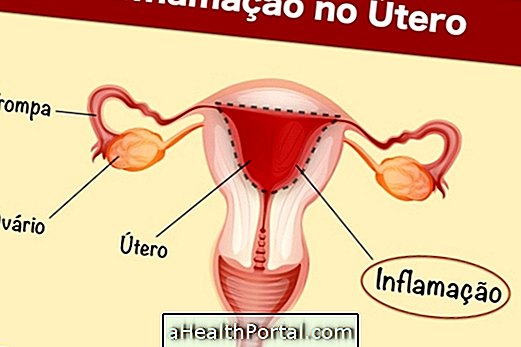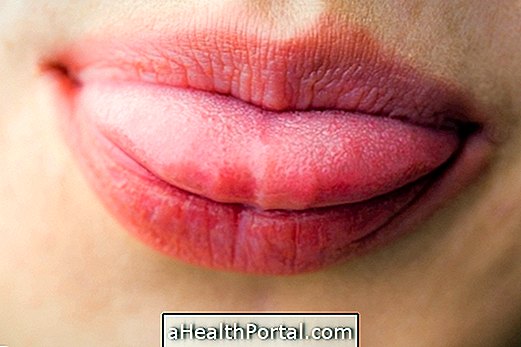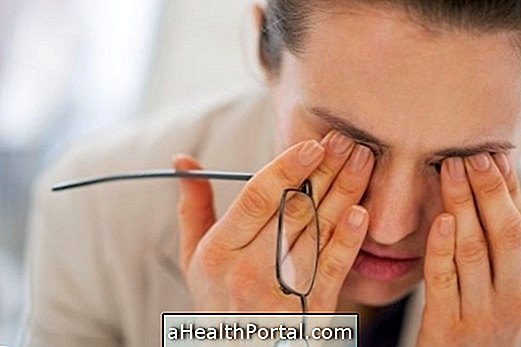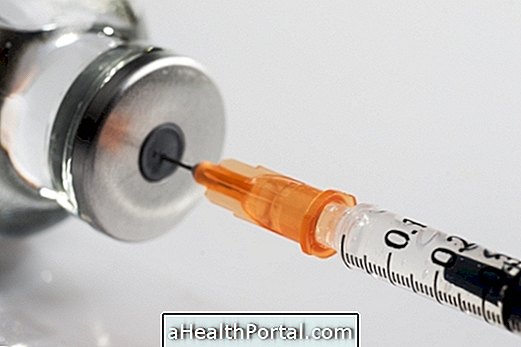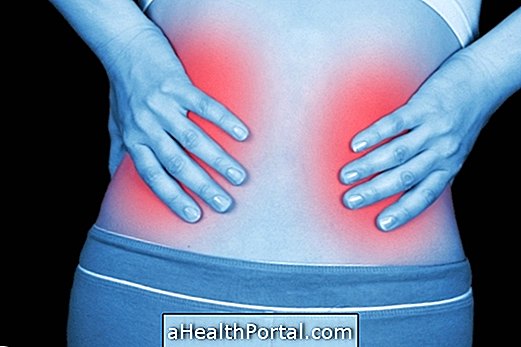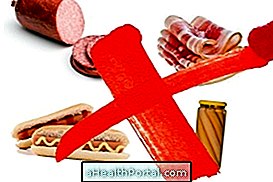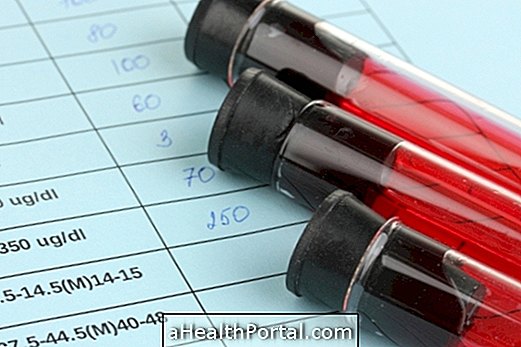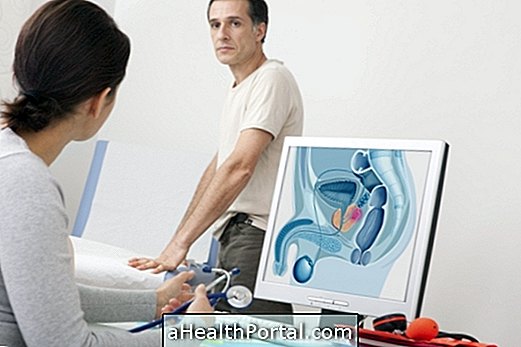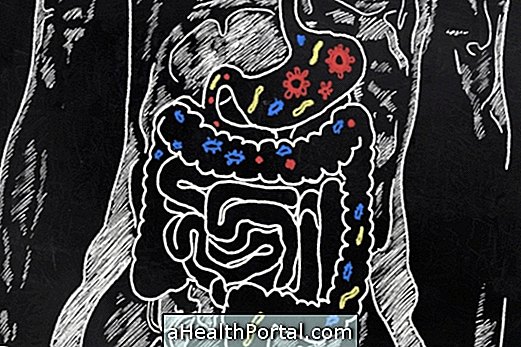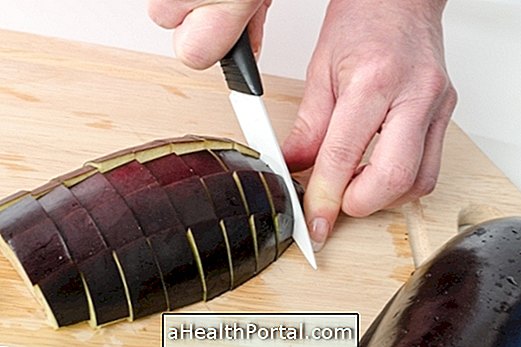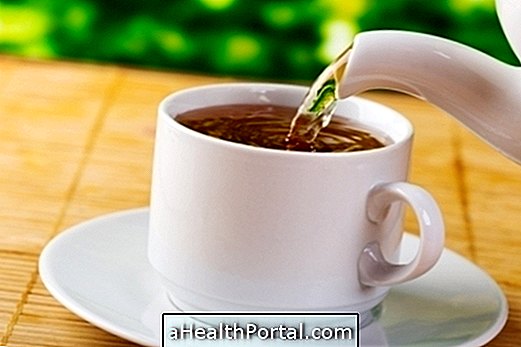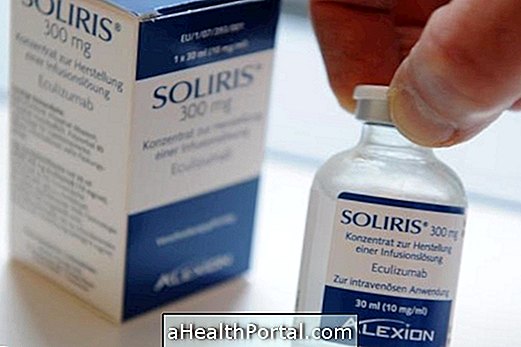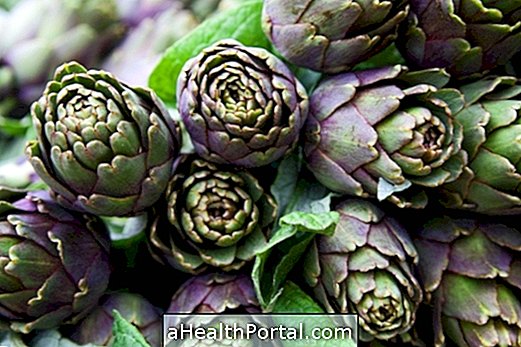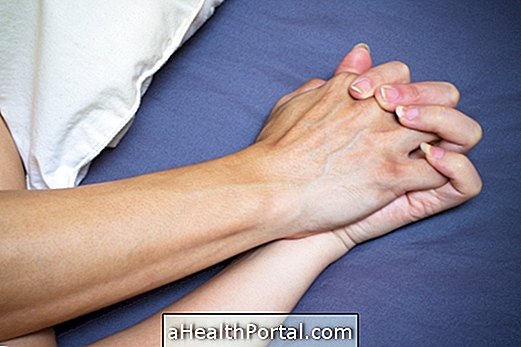Pain in the liver is usually located in the upper right region of the abdomen, and can be a sign of diseases such as infections, obesity, cholesterol or cancer, or it can happen due to exposure to toxic substances such as alcohol, detergents or even medicines.
Treatment of liver pain depends on the disease causing it and the associated symptoms, however, it can also be prevented with vaccination, proper nutrition, physical exercise or avoiding risky behaviors such as sharing syringes or practicing unprotected sex.
1. Infection
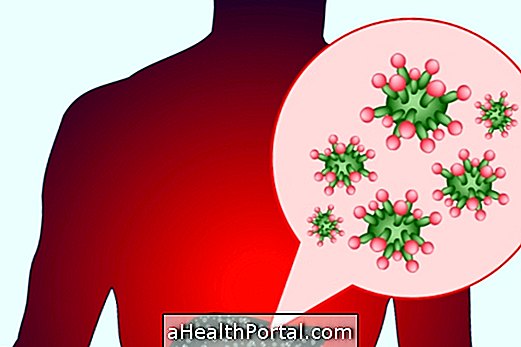
The liver can be infected by viruses or parasites, which cause inflammation and changes in its functioning. The most common types of liver infection are virus-transmitted hepatitis A, B, and C, which in addition to causing liver pain can also cause symptoms such as loss of appetite, nausea and vomiting, extreme tiredness, muscle and joint pain. joints, headache, sensitivity to light, light stools, dark urine, yellow skin and eyes.
Hepatitis A can be transmitted through contact with contaminated food or water, and hepatitis B and C are usually transmitted through contact with contaminated blood or secretions and may be asymptomatic, but treatment is required to prevent liver deterioration.
How to treat
Treatment for hepatitis involves the use of medications such as Interferon, lamivudine or adefovir for about 6 to 11 months, depending on the type of hepatitis and response to treatment, and an easily digestible, gelatin-based diet, fish or rice, for example. See more easily digestible foods.
Hepatitis has healing most of the time, but when treatment is not done properly, it increases the risk of developing cirrhosis and liver cancer. Hepatitis can also be prevented with hepatitis A and B vaccines, with the use of condoms during sexual intercourse, avoiding the sharing of needles and adopting good hygiene measures. Learn more about how to prevent the transmission of the hepatitis virus.
2. Autoimmune diseases

In these diseases, the person's immune system attacks the body itself and may also affect the liver, and examples are autoimmune hepatitis, primary biliary cirrhosis, and primary sclerosing cholangitis.
Autoimmune hepatitis is a rare disease in which the body attacks the liver's own cells causing it to become inflamed and causing symptoms such as abdominal pain, yellowing of the skin or feeling sick. Primary biliary cirrhosis consists of progressive destruction of the bile ducts located in the liver, and sclerosing cholangitis causes narrowing leading to symptoms such as fatigue and itching, for example, and may lead to cirrhosis and hepatic insufficiency.
How to treat
Autoimmune hepatitis is curable if a liver transplant is done, which is used in the most severe cases; however, the disease can be controlled with the use of steroid medicines such as Prednisone, or immunosuppressants such as azathioprine. It is also recommended a varied and balanced diet, avoiding the ingestion of alcohol and foods with a lot of fat. See more foods for autoimmune hepatitis.
In primary biliary cirrhosis and sclerosing cholangitis, ursodeoxycholic acid is the treatment of choice, and if it is started poorly the first symptoms may appear, it can reduce the rate of evolution of the disease, avoiding the occurrence of cirrhosis. In a terminal phase, the only treatment that effectively cures the disease is liver transplantation.
3. Genetic diseases

Pain in the liver can also be caused by genetic diseases that lead to the accumulation of toxic substances in the liver, as is the case of hereditary hemochromatosis, which causes excessive iron accumulation in the body, from oxaluria leading to an increase of oxalic acid in the liver, or Wilson's disease, in which there is accumulation of copper.
How to treat
Hemochromatosis can be treated by avoiding foods with large amounts of iron, such as red meat, spinach or green beans, for example. See more foods containing iron.
In the case of oxaluria, the consumption of oxalate present in spinach and nuts should be reduced, for example, and in more severe cases, dialysis, or even liver and kidney transplantation. Wilson's disease can be treated by reducing the intake of copper-rich foods such as mussels or by taking substances that bind to copper helping to eliminate it in the urine, as in the case of penicillamine or zinc acetate, for example. See more about Wilson's disease.
4. Alcohol in excess

Alcoholic hepatitis is caused by excessive intake of alcoholic beverages, which cause symptoms such as severe abdominal pain, nausea, vomiting and loss of appetite, for example, and if left untreated can lead to serious liver damage.
How to treat: Treatment consists of stopping alcohol intake and using drugs such as ursodeoxycholic acid or phosphatidylcholine, which reduce inflammation of the liver and relieve symptoms. In more severe cases, a liver transplant may be necessary.
5. Drug abuse

Drug hepatitis is caused by exposure to toxic substances or overuse of medications such as paracetamol, nimesulide, erythromycin or statins, for example, or even due to allergic reactions to them, which cause liver cell damage.
How to treat: The treatment consists of immediate suspension of the drug or toxic substance that is the source of the problem, and in more severe cases, the use of corticosteroids may be necessary until normalization of liver function.
6. Fat accumulation
The accumulation of fat in the liver is common in people with obesity, high cholesterol or diabetes, and may be asymptomatic or cause symptoms such as pain in the right side of the abdomen, swollen belly, nausea and vomiting.
How to treat: The treatment for fat in the liver consists of regular exercise and proper diet based on white meats and vegetables. See our nutritionist's tips on the recommended diet for fatty liver:

7. Cancer
Liver cancer can affect hepatocytes, bile ducts, and blood vessels, and is usually very aggressive, which can cause pain in the abdomen, nausea, loss of appetite, and frazzled eyes, for example. See more symptoms of liver cancer.
How to treat: Usually surgery is needed to remove the affected liver region and chemotherapy or radiation therapy may be necessary before surgery to decrease the size of the cancer.
Other symptoms of liver problem
Mark the following symptoms and know if you may have a liver problem or other diseases may be related:
- 1. Pain in the upper right region of the belly Yes No
- 2. Frequent dizziness or lightheadedness Yes No
- 3. Frequent headache Yes No
- 4. Easy tiredness and no apparent reason Yes No
- 5. Easy bruising Yes No
- 6. Yellowing of eyes or skin
- 7. Dark urine Yes No
- 8. Loss of appetite Yes No
- 9. Yellowish, gray or off-white faeces Yes No
- 10. Swollen belly Yes No
- 11. Itching all over the body Yes No

Home remedy for liver pain
A great home remedy for alleviating and treating liver problems is thistle-marian tea, which has silymarin in its composition, very effective in bile affections, hepatitis, fatty liver, toxic liver diseases, or even liver cirrhosis.
Ingredients
- 2 teaspoons of thistle-marian fruit
- 1 glass of boiling water
Method of preparation
Pour a glass of boiling water over the crushed thistle fruits and let it stand for about 10 minutes. The recommended dose is 3 to 4 cups per day.
How to prevent liver pain
Liver pain can be prevented by taking the following precautions:
- Drink alcohol in moderation, at most one or two glasses of wine a day;
- Avoid risky behaviors such as practicing unprotected sex, drug use, or sharing syringes, for example;
- Take the vaccines against the hepatitis A and B virus;
- Use medications moderately, avoiding drug interactions;
- Wear a mask and protect the skin while using toxic products contained in paints and detergents, for example;
In addition, it is also very important to practice regular exercise and make a balanced diet with foods that help detoxify the liver, such as lemon or artichoke, for example. See more foods that detoxify the liver.
When to go to the doctor
You should go to the doctor when the pain in the liver becomes intense and persistent and when accompanied by other symptoms such as yellowing of the skin and eyes, swelling of the legs, generalized itching of the skin, presence of dark urine and light or bloody stools, tiredness, feeling sick and vomiting or loss of appetite.
During the appointment, the doctor can do a physical examination to understand where it hurts, and can ask several questions about other symptoms and eating habits, or even do some tests such as ultrasound, MRI, CT scan, blood tests or biopsy. liver. See what these exams consist of.
